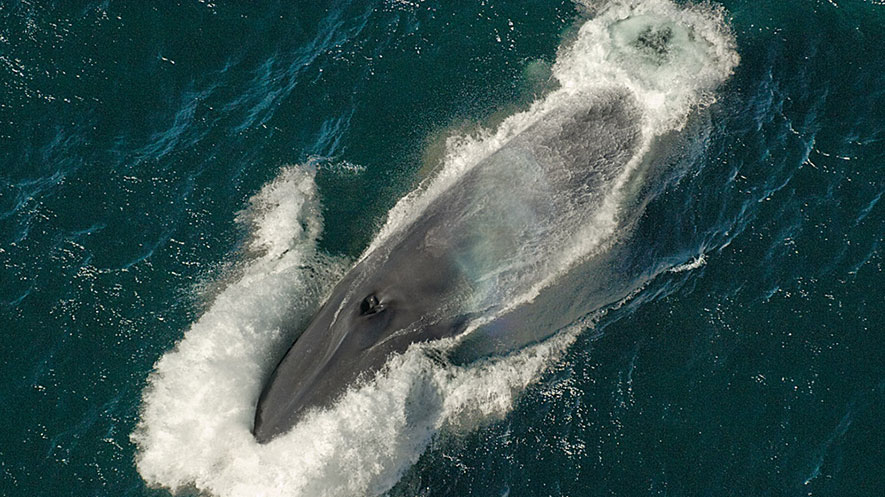A ground-breaking new study published in Nature Communications and carried out by scientists at Baylor University College of Arts & Sciences, USA, has shed light on the effects of both manmade and environmental factors on the stress levels of baleen whales.
Associate professors in biology and environmental science Stephen J. Trumble and Sascha Usenko were able to analyse stress levels by measuring the amount of cortisol in the earwax of fin, humpback and blue whales collected over a 150-year period.
“Understanding the response to sub-lethal stressors becomes crucial because baleen whales are considered sentinels of their environment and indicators of man-made perturbations,” said Trumble.
“This is the first-ever study to quantify temporal stress patterns in baleen whales," Trumble said. “While the generated stress profile spans nearly 150 years, we show that these whales experienced survivor stress, meaning the exposure to the indirect effects of whaling, including ship noise, ship proximity, and constant harassment results in elevated stress hormones in whales spanning vast distances.”
There is a consensus within the scientific community that cortisol, a hormone produced in the pituitary gland of the brain, is a good measure of stress response within animals. Previously, measuring cortisol levels in baleen whales was deemed far too difficult and expensive. However, the researchers have now found that the earplugs of baleen whales (previously used for aging) contain a chemical library within the growth layers that are deposited over the whale's entire lifespan.
A total of 1084 earplug lamina was analysed and their results found that whaling had a significant impact on whales' cortisol levels. During the 1960s when whaling was at its peak with 150,000 whales harvested, cortisol peaked to a maximum and was the highest average in whales in the 20th century. Interestingly, during the 1940s when whaling declined, whales still showed an increase in cortisol levels of 10 percent. Sascha Usenko pointed towards a world at war to help explain these findings. "We surmised that wartime activities such as underwater detonation, naval battles including ships, planes, and submarines, as well as increased vessel numbers, contributed to increase cortisol concentrations during this period of reduced whaling," Usenko said.
Cortisol levels were positively associated with sea surface temperature anomalies from 1970 to 2016, indicating that the effects of climate change may have now replaced whaling as the main stressor on baleen whales. "This study shows that anthropogenic stressors result in a physiological response in large whales. These chronic stressors may impact life history events such as reproductive parameters," Trumble said.
The researchers conclude the study by saying “Current human-induced stressors may have a greater deleterious effect to species already compromised by the significant population declines associated with a 100 + years of industrial whaling”. The next step will be to establish an association between other factors such as increased fishing, krill harvests, and sea ice decline and stress levels in whales and for managers, governments, and agencies to put measures in place that protect these animals from future change.
By Ellis Moloney
Trumble, S., Norman, S., Crain, D., Mansouri, F., Winfield, Z., & Sabin, R. et al. (2018). Baleen whale cortisol levels reveal a physiological response to 20th-century whaling. Nature Communications, 9(1). doi: 10.1038/s41467-018-07044-w
This project was funded by a grant from the Office of Naval Research (N00014-17-S-B001) to S.J.T. and S.U.



